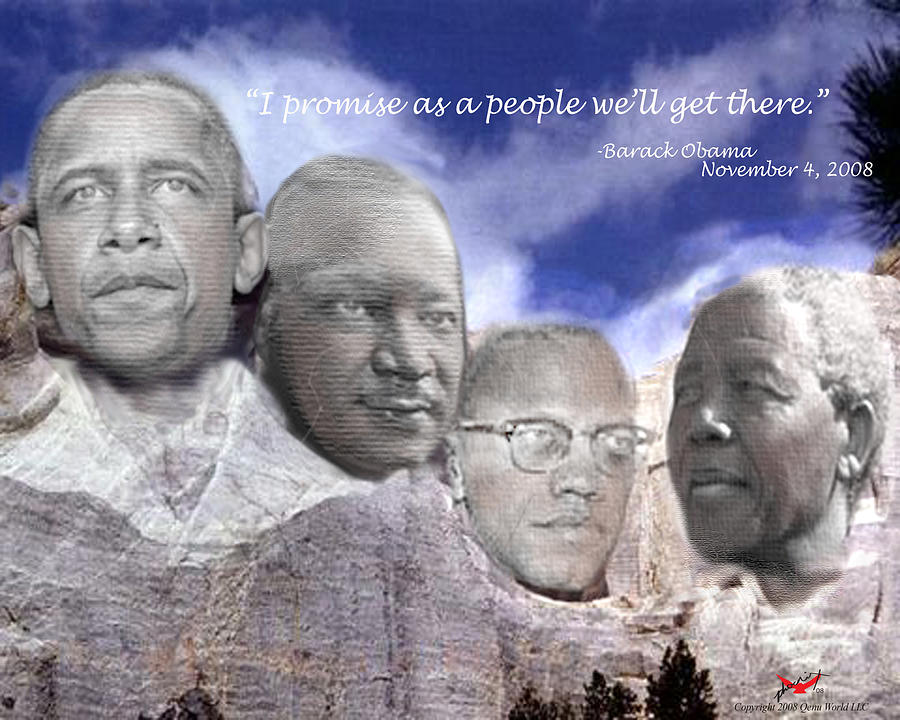
Black freedom moments gained momentum in 1960s America. African Americans orchestrated protests against the unfair treatment they received from White Americans since the outlawing of slavery. Strides were made towards the freedom for African Americans, but many blacks still were not satisfied. They believed that the end of segregation did not equal freedom just yet. There were two types of ideals that split African Americans down the middle at this time; those who advocated for violence because they believed it was the best way to liberate blacks and those who believed peaceful negotiations would bring change. Martin Luther King Jr., Malcolm X, Elijah Muhammad and Stokely Carmichael spearheaded the black freedom movements during the era. King was a firm believer in non-violence acts while Muhammad and Carmichael were supportive of the radical style like violence. Malcolm X approved of violent acts in order to negotiate the rights of the oppressed at the beginning of his activism, but would later adapt to a more peaceful approach. The Student Non-Violent Coordinating Committee, or SNCC were front and center in the black power movement and established itself as the sole negotiator of the rights of black people in the 60s in which their goal was to empower the black people. The blacks had been made out to believe that they were an inferior race compared to whites throughout the slavery periods, and later through segregation. SNCC made sure to glorify what it meant to be black. Slogans that empowered blacks were coined and chanted. They instilled a sense of pride and a sense of belonging for African Americans alongside the whites. As a result of all their accomplishments, SNCC was instrumental in advocating for the rights of blacks in peaceful manners. They organized bus rides through predominantly white states to demonstrate the black freedom of movement. They organized the freedom ballots that led to the Mississippi Freedom Democratic Party in 1963. They also organized peaceful gatherings where civil rights leaders would address the people. For many African American children in Birmingham in the 60s, the civil rights movement was already part of their lives. While many parents and civil rights leaders were very cautious about involving young people in the protests, it turned out that the brave actions of these children helped make lasting change in Birmingham at a key turning point in the movement. Early in 1963, civil rights leaders in the Southern Christian Leadership Conference (SCLC) and other civil rights groups developed a plan to desegregate Birmingham and the goal of their plan was to use a non-violent protest to get the city of Birmingham leaders and officials to agree to desegregate. The protest started in April 1963 with thousands of African American protesters in Birmingham. The protesters and hundreds of children were harmed and arrested. Also in 1963, Martin Luther King and six other leaders organized and led the march on Washington. The purpose of the march was to end racial discrimination in schools, employment, and public transportation. It was the largest event in Washington’s history. Martin Luther King gave his most iconic speech in America’s history, known as “I have a Dream” during this event. The speech was successful and impacted the American government while helping diminish discrimination. The Black Panther party, another black power movement advocated for violence in order to negotiate for their freedom. They employed violent activities towards the government. Due to volatile nature of their acts against whites, the government systematically designed programs that brought down the Black Panthers. Many of the group’s leaders were either assassinated or jailed. In conclusion, this time period illustrated how African Americans came together in order to to fight against the white race and against racism. African Americans joined hands with organizations and civil right leaders that promoted integration and peace among all races, primarily whites. These civil right heroes helped contribute to the freedom for blacks and showed them how to fight for their rights.
Image information: "Rushmore Digital Art" Picture by Phoenix Jackson. Source:
pixels.com/featured/black-rushmore-phoenix-jackson.html
Gaines, Kevin. "A World to Win: The International Dimension of the Black Freedom Movement." OAH Magazine of History 20.5 (2006): 14-18.



The 1960's were a time for the black community to really make a change and they did exactly that for themselves. They stood up for what they believed and with help of people like MLK and Malcom X they really pushed for equality and that is something we are still fighting for today. Without the 60's kick starting the revolution, who knows where we would be today.
ReplyDeleteHey Tariq! Outstanding read! You made numerous valid points that I agree with! I'm delighted we share some of the same views towards this movement! The black Panthers was honestly a dope organization, idc. Lol the more i talk about the Black panthers with people of diverse background, to my surprise, lots of people agree with their motives.
ReplyDeleteLOVE LOVE LOVE THE PICTURE !!!!!
ReplyDeleteI ALSO LOVED YOUR REFLECTION ON HOW YOU SAW THE BLACK MOVEMENT ALSO WITH IT BEING VERY FULLY DETAILED YOU REALLY DIDN'T LEAVE ANYTHING OUT. YOU HAD A LOT OF VALID POINTS !! KEEP UP THE GOOD WORK !
Hey, I really enjoyed reading your blog post.This time was the start of real freedom for black americans. I really like your picture in your post. During this time there was a real struggle for black people but they pushed through. Good Job!
ReplyDeleteTariq, first I want to say that the picture you chose was a great picture. I've never seen before and it goes great with your blog post. I liked how you covered mostly everything and went into depth. Even talked about your feelings towards it. Well done!
ReplyDeleteHey Tariq! The picture you chose really caught my eye, they should make a mountain with their heads instead of the racist founding fathers. I agree with a lot of the points you made and the 1960s truly was a turning point for Blacks living in America.
ReplyDelete